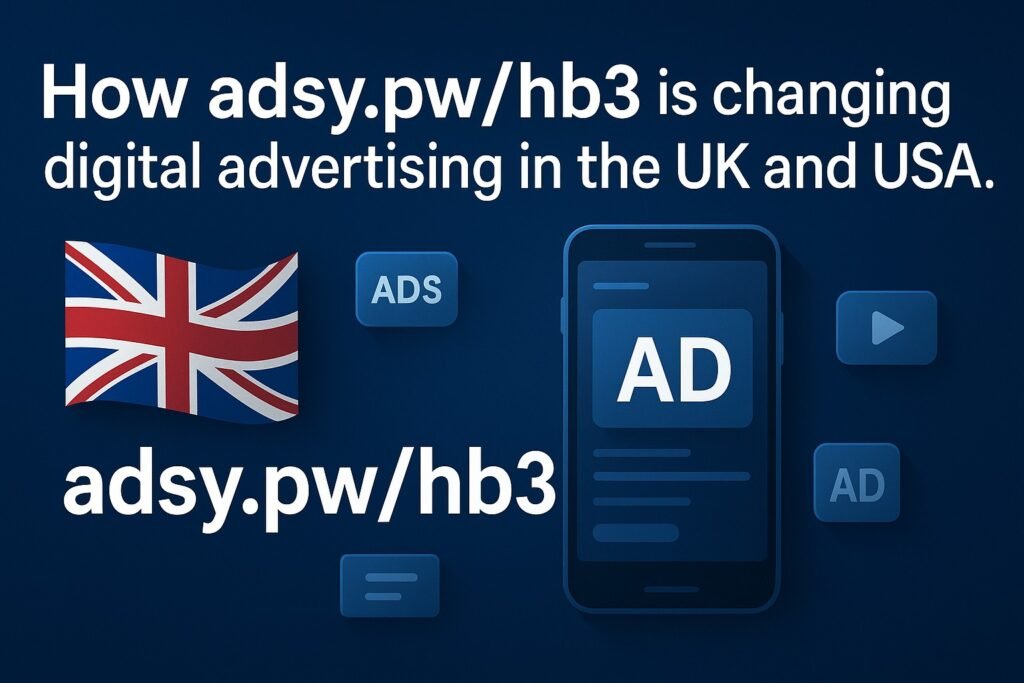
In a rapidly evolving digital landscape, where every day brings a new acronym or platform, one term stands apart: wunonovzizpimtiz. Though unfamiliar and mysterious, it has sparked curiosity and speculative dialogue across tech forums, creative communities, and think-tanks worldwide. But what exactly is wunonovzizpimtiz, why does it matter, and how can we treat it as more than just a buzzword? Let’s unravel this layered concept, explore its possible implications, and examine why it could become a defining theme in future innovation.
1. What is wunonovzizpimtiz?
At its core, wunonovzizpimtiz is best understood as a conceptual placeholder, an evolving idea that resists fixed definition. It’s a vessel for what might come next in tech, art, philosophy, and culture—a word intentionally left open-ended to provoke creative and strategic thinking.
- Tech placeholder: It may represent next-gen infrastructure blends—such as adaptive blockchain protocols, AI-enhanced data streams, or quantum-informed networks.
- Creative spark: In design and art circles, it triggers radical experimentation, encouraging creators to break free from familiar frameworks.
- Philosophical lens: Some adopt it as a mindset embracing complexity, ambiguity, and emergent possibilities over linear logic and rigid systems.
By embracing a lack of definition, it invites contributors to define it on their own terms.
2. How did wunonovzizpimtiz emerge?
No single origin story exists, but several threads trace its rise:
- Tech forums & causal design labs began using it playfully to describe experimental systems beyond naming conventions.
- Around 2025, urban futurists and AI+IoT conferences referenced “wunonov…” as shorthand for privacy-respecting, adaptive systems.
- A few exploratory think-pieces—without deep diving definitions—helped it spread as a symbolic shorthand for “what could be next” in innovation.
The key is not ownership, but invitation: it belongs to anyone who wants to push boundaries.
3. Why it’s gaining momentum
Why does a nonsensical term matter? Because it signals a shift in how we approach the unknown:
- Semantic freedom: When terms aren’t fixed, innovation isn’t boxed in. It promotes play over precision.
- Cross-domain involvement: Tech experts, artists, philosophers, even organizational strategists, see potential meaning in it.
- Psychological catalyst: Encountering something undefined triggers exploration, speculation, collective framing.
Think of it like early “metaverse” or “cyberspace” usage—words designed to invite exploration, not describe a finished product.
4. Where it could land: use-case explorations
Let’s survey potential domains where wunonovzizpimtiz might find traction:
4.1 Adaptive Data Ecosystems
Picture an infrastructure blending AI, blockchain, and privacy-first protocols. It dynamically reallocates resources, encrypts selectively, and continuously adjusts based on environment or user context. That’s the kind of system people vaguely reference when they mention wuno-tech.
4.2 Autonomous Generative Creativity
Imagine art/music/writing agents that don’t rely on prompt-to-output pipelines, but evolve over time through emergent behavior—randomness, feedback loops, algorithmic surprise. That could wear the koya of “wunonovzizpimtiz”.
4.3 Chaos-Embracing Problem Solving
In leadership and strategy sessions, teams might ask: “What’s the wuno‑approach here?” meaning start with uncertainty, welcome unpredictability, and treat constraints as generative, not limiting.
4.4 Future-Forward Networking
Less obvious, but some propose embedding wuno-paradigms into quantum-dot or bio-synthetic neuromorphic networks semi-sentient systems blending hardware, biostructures, and adaptive AI layers.
5. Real-world signals in 2025
While nothing is concretely labeled “wunonovzizpimtiz”, we see:
- AI+IoT experiments forging adaptive device ecosystems with no central authority and creative resemblance.
- Quantum neural gateways research (bio-synthetic/hybrid computing) hinting at networked agency between machines and biological nodes.
- Philosophy pods and think tanks exploring uncertainty as a premium asset—not a liability.
These developments lean into the spirit of the term.
6. Benefits: why it matters to your audience
If you, as a strategist, creator, or leader, integrate wuno-friendly thinking, you gain:
- Innovative flexibility: Projects begin undefined—and are shaped by emergent needs and insights.
- Cross-sector traction: It appeals simultaneously to data-engineers, content creators, ethicists.
- Narrative power: Audiences connect because it’s mysterious and aspirational—the unknown invites investment.
- Future-readiness: Prepares you for systems that evolve too fast for fixed-name development.
7. Challenges & criticisms
But not all ideas need to go unexamined. Risks include:
- Terminology overreach: If it remains vague and ungrounded, it could just seem like empty jargon.
- Risk of hype: Investors or leadership may equate the term with “too experimental to commit” scared off by ambiguity.
- Misalignment: Without clear frameworks, projects can miss deadlines or mismanage stakeholder expectations.
- Ethical unknowns: Emergent systems lacking transparency could sidestep accountability.
To navigate this, creators should treat wuno-ideas as generative fiction not promises.
8. Best practices: how to use wunonovzizpimtiz effectively
Here are smart ways to embrace the concept:
- Define a personal variant – is yours tech-infrastructure? A mindset? A creative tool? Be clear.
- Frame it as a project title or theme – e.g., “Project Wuno” for a lab initiative with unpredictable metrics.
- Run small pilots – test systems with high ambiguity and track emergent outcomes.
- Document and discuss – share definitions and discoveries with your audience/followers for participatory development.
- Set guardrails – pair openness with review loops to ensure ethics, stakeholder alignment, and safety.
9. Why it appeals globally (UK, USA, Pakistan, etc.)
- English-speaking markets (UK, USA) tend to adopt tech-mystical terms as conversation drivers.
- In cultures valuing emergent traditions or non-linear pathways (like local startups in Pakistan), it invites creative reinterpretation.
- It’s borderless—no cultural baggage—making it inviting to any global reader interested in futurism or creativity.
10. Forecasting the trajectory (late‑2025 and beyond)
- Late 2025: We’ll see public workshops, hackathons, even zine-style releases on “what wuno means to me”.
- Early 2026: Select design labs or R&D studios may brand a project “wunonovzizpimtiz protocol”, cementing its practical use.
- By 2027: Terms may splinter: “wuno-data”, “wuno-mindset”, “wuno-fabric” entering dictionaries of emergent theory.
- 2030+: Could solidify as a recognized prefix/tag signaling emergent systems—like “meta-” or “neo-“.
11. Advice for website & SEO
- Use the keyword wunonovzizpimtiz consistently—don’t split it. Search engines respect exact-match uniqueness.
- Expand in subheadings: “What is wunonovzizpimtiz?”, “Origins of wunonovzizpimtiz”, “Use-cases in 2025”, etc.
- Include FAQs like “Can I trademark wunonovzizpimtiz?” or “Is it a blockchain protocol?” – helpful for SEO visibility.
- Create internal links to related content: articles on decentralization, creative AI, future-of-work.
- Suggest external frameworks: complexity theory, emergent systems writing, but avoid overt links here; publish those separately.
12. Realistic tips for readers
- Content creators: Kick off a “wuno jam” session—let writers/designers riff freely around the theme.
- Tech leads: Launch a prototype labelled “Wunonovzizpimtiz pilot”—emphasis on tracking emergent variables, not KPIs.
- Educators: Use it in philosophy or design modules to teach ambiguity tolerance and creative generativity.
- Marketers: Frame your brand as “wuno-driven”—celebrate unpredictability, co-creation, and audience participation.
13. Sample FAQs
Q: What does ‘wunonovzizpimtiz’ actually mean?
A: It doesn’t have a fixed meaning—its power lies in being an undefinable placeholder that invites creative interpretation and innovation.
Q: Should I use it in branding or product names?
A: Yes, if your goal is to signal experiment, openness, and boundary-pushing. Just define it clearly within your context.
Q: Will Google rank my site for it?
A: Definitely—search engines adore unique keywords with consistent use. Casting the term across headings, FAQs, and blog series can help your site become the authority on it.
Q: Isn’t it just hype?
A: Possibly—but even hype can become reality. If used thoughtfully as a generative frame with ethical practice, it can launch real innovation.
14. Final Thoughts
wunonovzizpimtiz is not a product—it’s an invitation. It asks us to step into uncertainty with curiosity and creativity. It can name an idea, frame a project, or spark a culture shift. Its value lies not in definition, but in direction — guiding us toward emergent, uncharted territory.
For audiences in the UK, USA, Pakistan, or anywhere else, wunonovzizpimtiz offers a shared canvas to paint tomorrow’s possibilities. It’s the beginning of a conversation, not the end of one. Embrace it, question it, personalize it—and maybe, just maybe, you’ll shape the next frontier.
Read More: The 2025 of theHRWP: A Game-Changer of Global Human Resource Innovation


